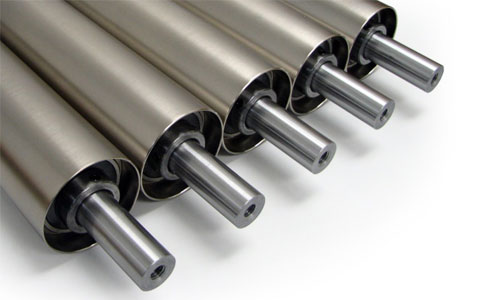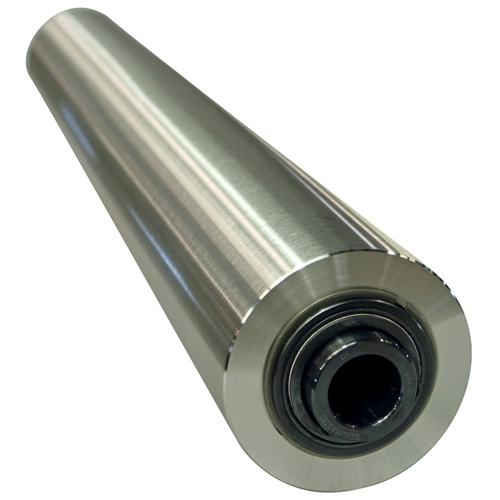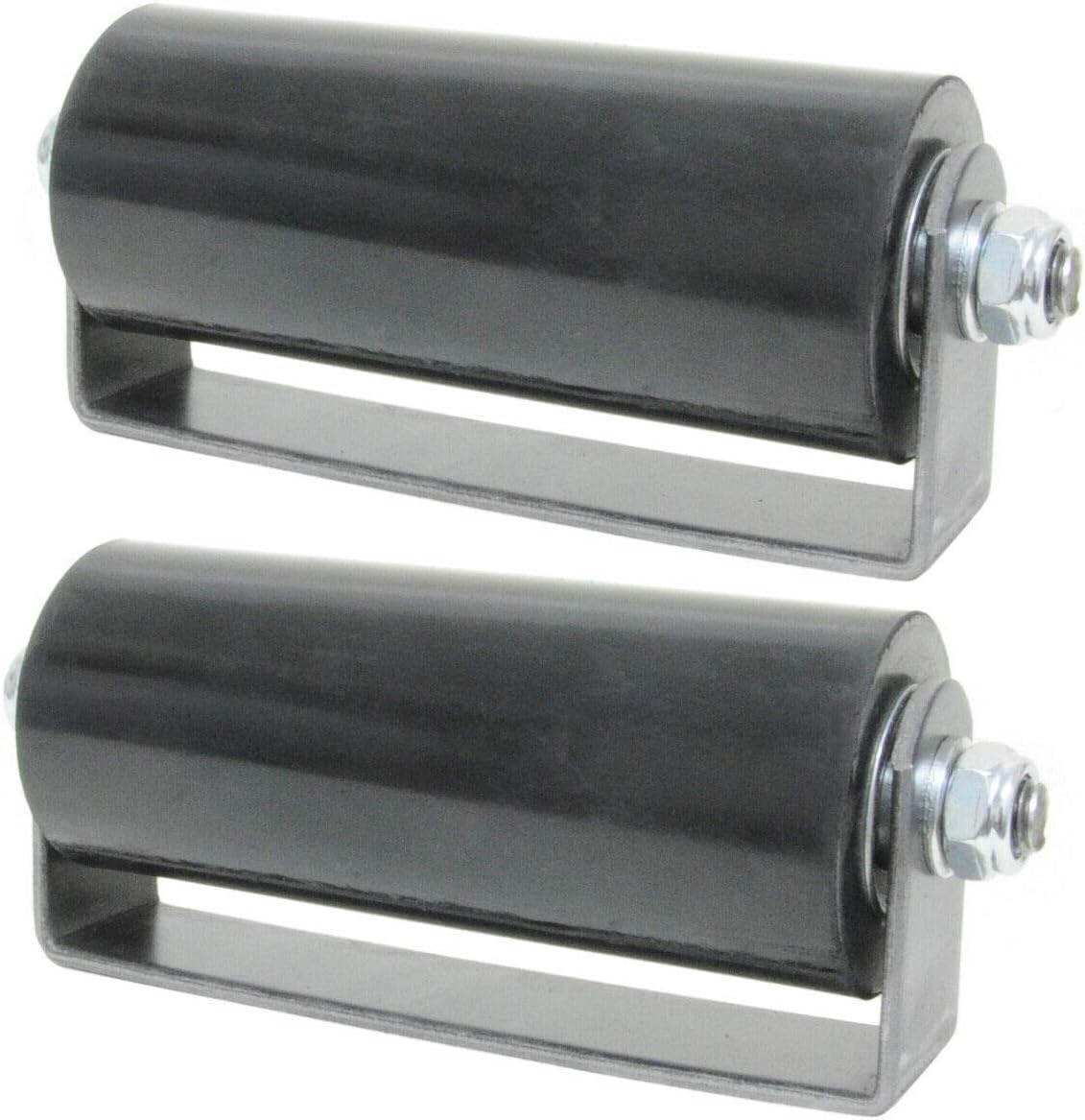Product Description
Company introduction
HangZhou CHINAMFG Precision Equipment Co., Ltd. is HangZhou Rongjiu Machinery Export Co., Ltd.With a wheat, Aoke, Rongjiu, Chengli, the company group has a total of 4 brands.We also have 4 manufacturing plants.Single machine production line ZheJiang and HangZhou 3 machine parts production line.Company Profile: Number of Employees :110 Factory Area: 12,000m² Certification :ISO9001:2015, CE, CCC, RoHS.
/* January 22, 2571 19:08:37 */!function(){function s(e,r){var a,o={};try{e&&e.split(“,”).forEach(function(e,t){e&&(a=e.match(/(.*?):(.*)$/))&&1
| Certification: | ISO9001, ISO, CE, RoHS |
|---|---|
| Material Capabilities: | Steel |
| Type: | Roller |
| Surface Treatment: | Rubber |
| Transport Package: | Wooden Box/Paper Tube |
| Specification: | custom |
| Samples: |
US$ 150/Piece
1 Piece(Min.Order) | |
|---|

Can guide rollers be customized for specific industries or conveyor configurations?
Yes, guide rollers can be customized to meet the specific requirements of different industries or conveyor configurations. Here’s a detailed explanation of how guide rollers can be customized:
- Material Selection:
The choice of materials for guide rollers can be customized based on the industry or application requirements. Different industries may have specific material requirements due to factors such as environmental conditions, load capacity, or chemical resistance. Guide rollers can be manufactured using various materials, including metals like stainless steel or aluminum, as well as different types of polymers such as polyurethane or nylon. Customizing the material selection ensures that the guide rollers are suitable for the industry’s unique needs and can withstand the demands of the conveyor system.
- Dimensions and Sizes:
Guide rollers can be customized in terms of their dimensions and sizes to accommodate specific conveyor configurations. The outer diameter, length, and shaft dimensions of the guide rollers can be adjusted to fit the available space or specific mounting requirements. Customizing the dimensions and sizes ensures proper integration of the guide rollers into the conveyor system and allows for seamless operation without any constraints or interference.
- Flanges and Grooves:
The configuration of flanges and grooves on guide rollers can be customized to provide enhanced guidance and control. Depending on the application, different industries may require specific flange or groove designs to prevent material deviation, improve lateral stability, or facilitate tracking along curved or inclined conveyor sections. Customizing the flange and groove configurations ensures that the guide rollers meet the precise guidance and alignment needs of the conveyor system in a particular industry.
- Specialized Coatings or Finishes:
Guide rollers can be customized with specialized coatings or finishes to enhance their performance and durability. Industries with unique requirements, such as food processing, pharmaceuticals, or electronics, may require guide rollers with specific coatings to ensure hygiene, reduce friction, or prevent static buildup. Customized coatings or finishes can be applied to guide rollers to meet the industry’s specific needs and comply with regulatory standards.
- Mounting Configurations:
The mounting configurations of guide rollers can be customized to align with different conveyor systems. Industries may have varied conveyor designs, such as overhead conveyors, floor-mounted conveyors, or inclined conveyors. Customizing the mounting configurations of guide rollers ensures proper installation and integration with the specific conveyor configuration, allowing for efficient material handling and smooth operation.
- Specialized Features:
Guide rollers can be customized with specialized features to cater to unique industry requirements. For example, industries that handle delicate or fragile materials may require guide rollers with cushioning or shock-absorbing properties to minimize impact. Customized features like bearings, seals, or lubrication systems can also be incorporated into guide rollers based on specific industry needs. These specialized features enhance the performance, reliability, and longevity of guide rollers in demanding industrial applications.
By offering customization options such as material selection, dimensions and sizes, flanges and grooves, specialized coatings or finishes, mounting configurations, and specialized features, guide rollers can be tailored to meet the specific requirements of different industries or conveyor configurations. Customized guide rollers ensure optimal performance, compatibility, and efficiency in material handling applications.

What are idler rollers, and how do they function in conveyor systems?
Idler rollers, also known as conveyor idlers or simply idlers, are an essential component of conveyor systems. They play a crucial role in supporting and guiding the conveyor belt or other conveying surfaces, facilitating the efficient movement of materials. Idler rollers are typically cylindrical in shape and are positioned along the length of the conveyor system.
The primary function of idler rollers is to support and shape the conveyor belt. They provide a stable platform for the belt to rest on and help maintain its proper alignment and tension. Idler rollers are strategically placed at various intervals along the conveyor, creating a series of support points. These support points distribute the weight of the conveyed materials and minimize the sagging or deformation of the belt, ensuring smooth and consistent material movement.
Idler rollers also help to reduce friction between the belt and the supporting structure of the conveyor system. By allowing the belt to roll over them, they minimize the contact area and the associated frictional resistance. This reduces power requirements and energy consumption, contributing to the overall efficiency of the system.
Another important function of idler rollers is to guide the conveyor belt and prevent it from deviating from its intended path. They are designed with precise dimensions and smooth surfaces to ensure proper belt tracking. The alignment of idler rollers is critical for maintaining the belt’s centered position within the conveyor frame. Well-aligned idler rollers help prevent material spillage, belt misalignment, and potential damage to the system.
Idler rollers are available in various designs and configurations to suit different conveyor system applications. Some common types of idler rollers include:
- Troughing Idlers: These idlers have a concave shape and are used to support the conveyor belt on the carrying side. They help contain the material being conveyed, preventing it from spilling off the sides of the belt.
- Impact Idlers: Impact idlers are designed to absorb the impact of heavy or sharp-edged materials as they fall onto the conveyor belt. They are often positioned in the loading zone to protect the belt and other components from damage.
- Return Idlers: Return idlers support the return side of the conveyor belt and help maintain its tension. They are positioned beneath the belt to support its lower run and assist in belt tracking.
- Training Idlers: Training idlers are used to correct belt misalignment and ensure proper tracking. They are typically adjustable and can be positioned to apply lateral forces to the belt, guiding it back to the center of the conveyor frame.
In summary, idler rollers are integral components of conveyor systems. They provide support, shape, and guide the conveyor belt, ensuring smooth material movement and maintaining proper belt alignment. By minimizing friction and facilitating efficient belt tracking, idler rollers contribute to the overall performance, reliability, and efficiency of conveyor systems.

How does the design of a guide roller contribute to efficient material handling and movement?
The design of a guide roller plays a crucial role in facilitating efficient material handling and movement within industrial applications. Here’s a detailed explanation of how the design of a guide roller contributes to efficiency:
- Surface Configuration:
The surface configuration of a guide roller is carefully designed to optimize material handling and movement. Depending on the specific application, guide rollers may have a smooth surface, grooves, or flanges. A smooth surface reduces friction and allows objects to glide smoothly along the roller. Grooves or flanges provide additional guidance and prevent objects from deviating or slipping off the roller. The surface configuration ensures proper alignment and prevents misalignment, leading to efficient material handling and movement.
- Material Selection:
The choice of materials for guide rollers is critical in ensuring efficient material handling. Guide rollers are commonly made from durable materials such as metal or high-quality plastics. These materials offer excellent strength, wear resistance, and dimensional stability. The selected materials should also have low friction properties to minimize energy loss and reduce the potential for material damage or wear. By selecting appropriate materials, the design of guide rollers contributes to efficient and reliable material handling and movement.
- Bearing System:
The design of guide rollers incorporates a bearing system that allows smooth rotation and minimizes friction. The bearings used in guide rollers are typically sealed or shielded to protect against contaminants and ensure long-lasting performance. The bearing system enables the guide roller to rotate freely, reducing resistance and facilitating efficient material movement. It also contributes to the longevity of the guide roller by reducing wear and minimizing the need for frequent maintenance.
- Size and Diameter:
The size and diameter of a guide roller are carefully determined based on the specific application and load requirements. Guide rollers come in various sizes and diameters to accommodate different material handling needs. Larger guide rollers can handle heavier loads with greater stability, while smaller guide rollers are suitable for lighter objects or confined spaces. The appropriate sizing and diameter of the guide roller ensure optimal support, load distribution, and efficient movement of materials.
- Installation and Positioning:
The design of guide rollers takes into account proper installation and positioning within the machinery or system. Guide rollers are strategically placed along the intended path to provide continuous guidance and support. The spacing between guide rollers is determined to prevent material deviation or excessive sagging. Proper installation and positioning of guide rollers ensure smooth and consistent material handling, minimizing the risk of jams, misalignment, or disruptions in the movement process.
In summary, the design of a guide roller significantly contributes to efficient material handling and movement. The surface configuration, material selection, bearing system, size and diameter, as well as the proper installation and positioning of guide rollers, all play a vital role. By providing precise guidance, minimizing friction, supporting loads, and ensuring proper alignment, the design of guide rollers optimizes material handling processes, enhances productivity, and promotes efficient movement within industrial applications.


editor by Dream 2024-04-23